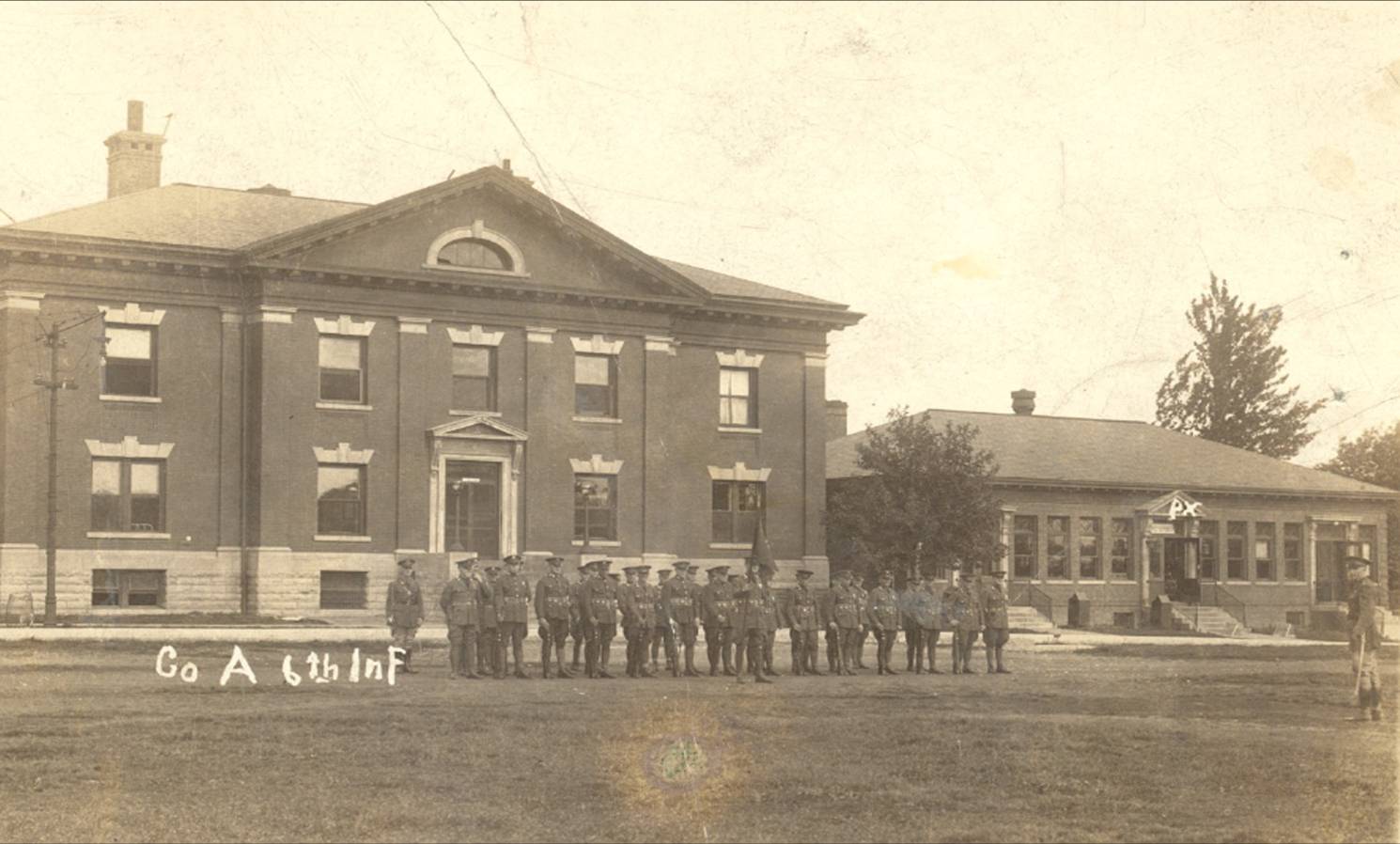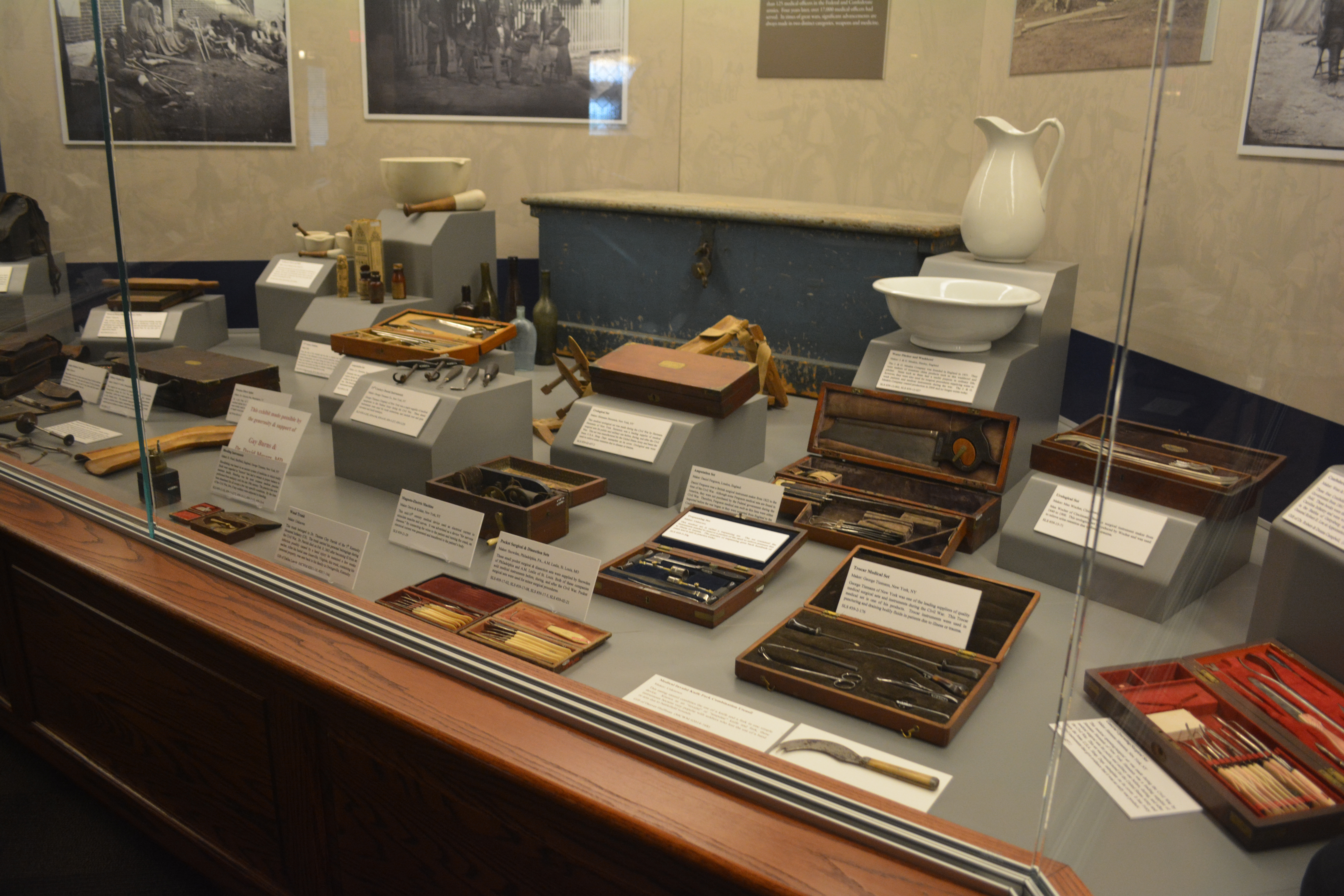ECW Weekender: Missouri Civil War Museum
Emerging Civil War welcomes back guest author Kristen M. Trout
Nestled on an elevated plateau just south of St. Louis, Missouri lies the country’s oldest active military installation west of the Mississippi River. Established in 1826, Jefferson Barracks served in many capacities over the next century, such as a rendezvous point for westward expansion and the Mexican War, a major troop mobilization and hospital complex during the Civil War, a cavalry base of operation during the Indian Wars, and a national troop induction center during World War I and World War II.

Over 220 Civil War generals served at Jefferson Barracks during their military careers, such as Robert E. Lee, Ulysses S. Grant, Winfield Hancock, James Longstreet, and even Confederate President Jefferson Davis. Today, after recovering from a sixty-year decline since the end of World War II, Jefferson Barracks is now a county park, Missouri Air National Guard base, national cemetery, and one of the nation’s finest veteran’s hospital complexes. Many historic structures from the old military installation still remain throughout the site with two of these buildings now utilized as a new Civil War museum and educational center.

The Missouri Civil War Museum was founded in 2002 with the mission of restoring the historic 1905 Jefferson Barracks Post Exchange Building, which had been abandoned for nearly sixty years. The building itself was boarded up and covered in vines. It was in a terrible state of disrepair and facing the threat of being demolished. After conducting initial research on the building and barracks, the staff discovered that the old brick building had faithfully served the Army from 1905 until 1946. It was initially constructed as a recreational facility and commissary store until the outbreak of World War I when it was converted into a troop barracks for the 6th US Infantry Regiment. During World War II, the building was utilized again as a recreational facility and later as a hospital overflow ward. The museum’s second building is the 1918 Jefferson Barracks Post Exchange Building that was constructed during World War I to replace the 1905 building’s function as a commissary store.
The staff embarked on an eleven-year journey to save both the 1905 and 1918 Post Exchange Buildings. As a grassroots nonprofit organization, the Missouri Civil War Museum relied upon small monetary gifts and donations to sustain the effort until it could open to the public. The museum prides itself in the fact that not one dollar of public taxpayer money was utilized in its construction, nor does the museum today utilize any taxpayer funds to operate. Over the course of a decade, the Museum acquired thousands of artifacts. On June 29, 2013, the Missouri Civil War Museum opened to the public as the state’s largest Civil War museum.

Today, the Museum is filled with hundreds of artifacts in a variety of exhibits. Some of these artifacts include the Medals of Honor of Pvt. Charles Bieger from the 4th Missouri Cavalry, two parlor chairs of Mary Todd Lincoln, and other items once owned by significant Missouri individuals such as Confederate General John Marmaduke, Union General James McCormick, and others. Many topics relating to Missouri in the Civil War such as the border war, guerrilla warfare, medical care, slavery and emancipation, photography, camp life, and more are highlighted in the galleries and videos throughout the museum. There are also exhibits on the history of Jefferson Barracks, the post-war fraternities, the Medal of Honor, the United Confederate Veterans, and the Grand Army of the Republic.
To visit the Museum, there is a nominal admission fee with members, active military, and children under 5 free. For more information, you may call the Missouri Civil War Museum at 314-845-1861, or visit their official website at www.mcwm.org.
Kristen M. Trout is the Programming Coordinator and Historian at the Missouri Civil War Museum in St. Louis, Missouri. She graduated from Gettysburg College in 2014 with a BA in History and Civil War Era Studies, and is currently pursuing her MA in Nonprofit Leadership and Management at Webster University. A native of Kansas City, Kristen has a fond interest in the Civil War in Missouri, Civil War medicine, and the war experiences of soldiers.

I visited Jefferson Barracks a number of years ago, before this current museum, I am sure. I would love to go back. And I would like to visit the Grant cottage in St. Louis again as well.
Dave, definitely come on back to St. Louis! Jefferson Barracks has changed drastically for the better in terms of historic preservation. Hope to see you at the Museum soon!
Great beer scene, the Cardinals, and a fascinating history. St. Louis has a lot to recommend it. My parents used to live in Columbia so I’ve visited several of the Civil War sites in the state. Love the Wilson’s Creek, Carthage, Lexington, and Centralia battlefields. Next time I’m up that way I will definitely stop by.
James, great! We would love to have you come visit soon!
My dad spoke of his experience when he was stationed there during WWII.
I for sure want to visit the Missouri Military Museum when I next visit Missouri. I grew up in Mo but I live in Columbia, South Carolina (for last 37 years) I love history and obviously there is a lot of civil and revolutionary history in SC.
My great, great grandfather, Benjamin Luaders was a private in the 4th Missouri Cavalry. He enlisted as a 35 year old and served from 1862 to the end of the war. He survived his service in a very active cavalry Battalion which saw action in Mo, KS, KY, TN, AL, and MS. The Battalion served under Gen. Grant for much of the Civil War. I found Benjamins grave last year in a small town near Jeff City, he had a Union Army headstone. Growing up near Jeff City I had never heard of Benjamin. Thank Goodness the Army kept very good records, even as far back as the Civil War. Those records really helped me find Ben.
My mother’s side of our family is also from Mo., Miller County, and they have been in Mo since around 1800. My Great, Great grandfather Bennett Shelton was also a private in the Missouri home guard. A family member has done all the research on the Shelton family which came from England to American in the 1700’s.
When I retired a few years ago I finally had the time to research our family and was gratified to discover some family history. Ben was born in St. Louis in 1827 but I have not been able to find out more about him so far. I would like to trace our family back further but not sure.